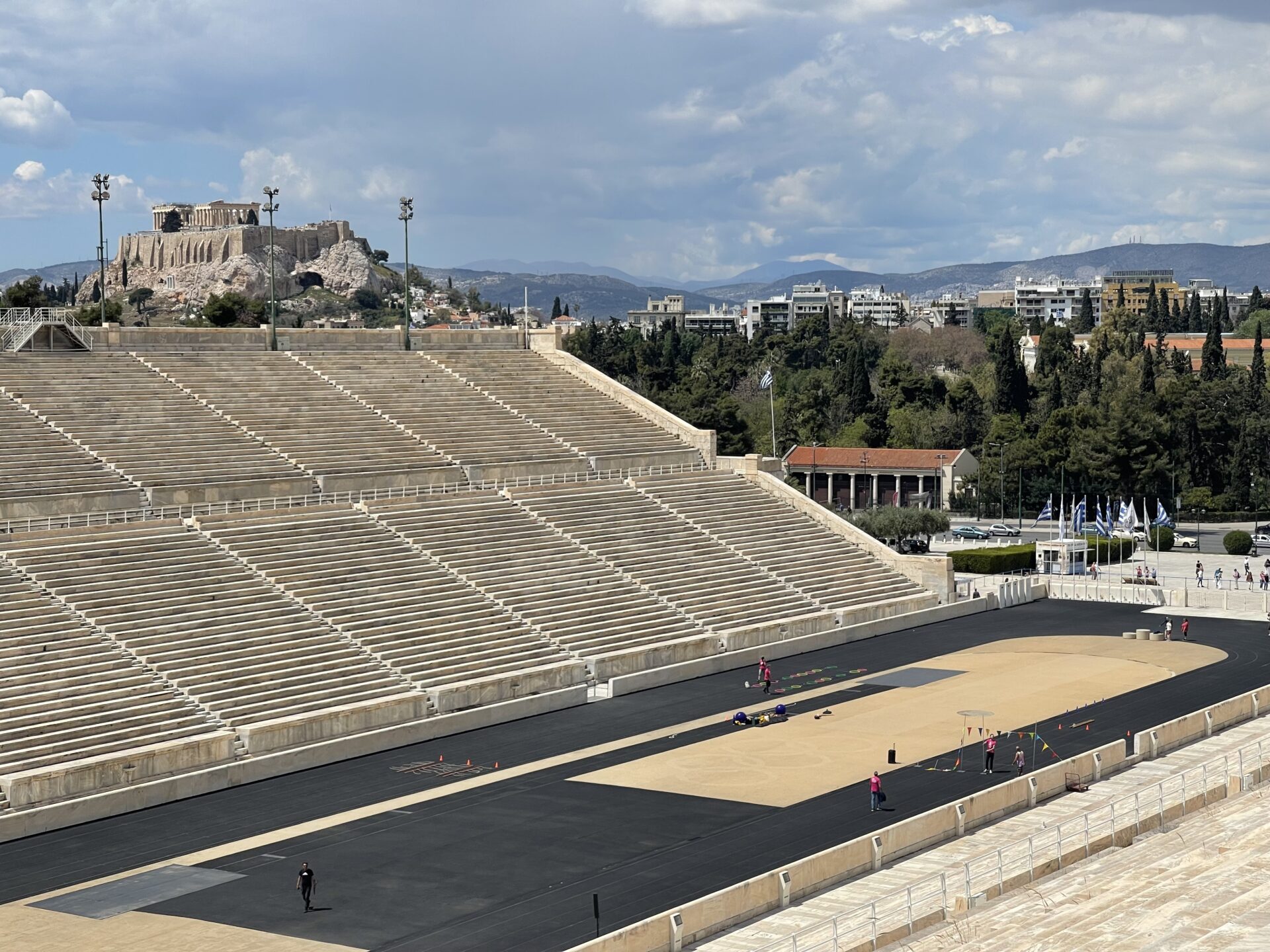This article has partner links that I may receive compensation from at no cost to you. Thank you for supporting my site by using them!
While many ancient civilizations had athletic competitions, none have such close ties to modern sports as those of the ancient Greeks. Games such as the Panhellenic Games, which included the Ancient Olympics, featured events that still form the modern Olympiad. For centuries, a similar competition called the Panathenaic Games was held every four years at the Panathenaic Stadium in Athens. Following excavation and refurbishing, the stadium is still used today and is open for tours.
History of Panathenaic Stadium
The Panathenaic Stadium was first built around 330 BCE on the site of a former racecourse. It was subsequently rebuilt with marble seating by Herodes Atticus around 140 AD. It is the only stadium in the world made entirely of marble. This construction gave the stadium its local name, Kallimarmaro Stadium, which means “beautiful marble.” During this period, it sat approximately 50,000 spectators & hosted the athletic events of the Panathenaic Games.
After hundreds of years of athletic competition, events such as the Panathenaic Games were banned in the late 4th century AD by Roman Emperor Theodosius I.
At this point, the Panathenaic Stadium fell into disrepair. Mostly forgotten aside from a few remaining architectural elements that were not removed & incorporated into other Athenian buildings, it would remain this way until the 1800s.
A thorough excavation of the Panathenaic Stadium took place in 1869-70. Although not much of the marble remained, the site still had its overall layout.
Book your hotel in Athens now!The first modern Olympic games were held in 1896. A complete refurbishment of the Panathenaic Stadium took place in time for it to be the centerpiece of the Olympics. The opening & closing ceremonies of the 1896 Olympics were held in the stadium, as were several events.
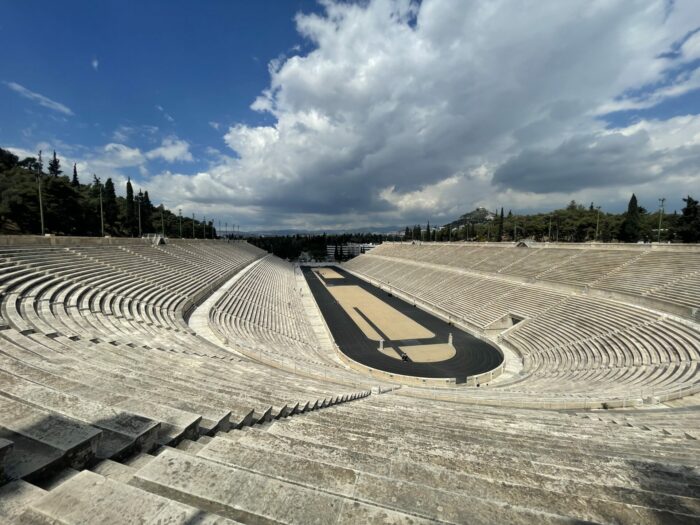
Even with the Olympics moving around the world, the Kallimarmaro Stadium remains an important part of the Olympic tradition. After the Olympic torch is lit in ancient Olympia, it is brought to the stadium in Athens, where there is a ceremony to hand it over to the host country.
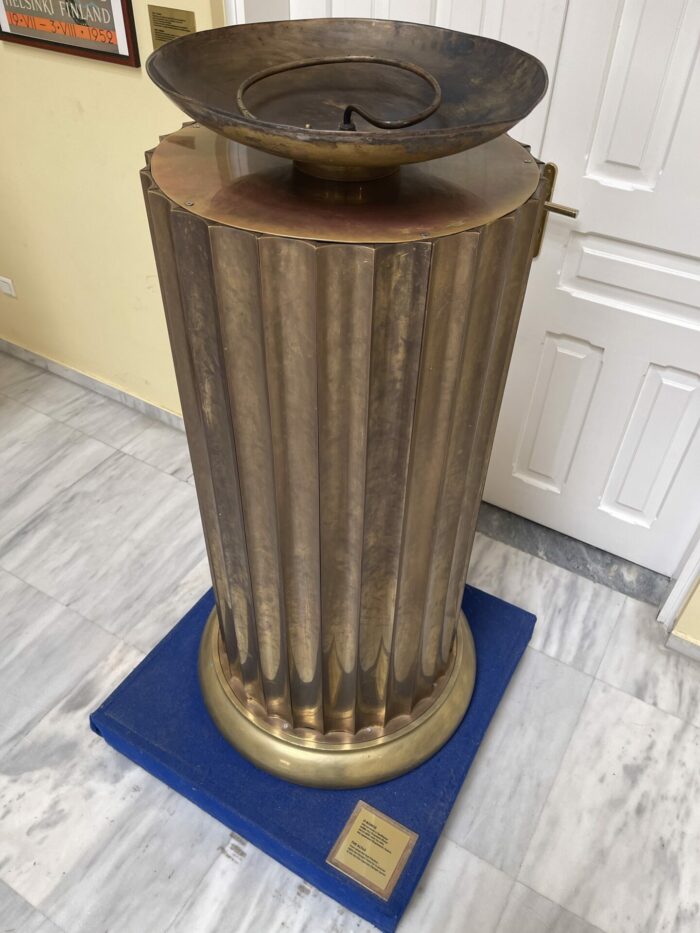
The reconstructed Panathenaic Stadium remains a point of pride in Athens. When the Summer Olympics returned to the city in 2004, the stadium hosted the archery competition and the finish line for the marathon. The Panathinaiko Stadium is still used for this same purpose for the annual Athens Classic Marathon. It also hosts concerts.
Panathenaic Stadium Tour Information
Panathenaic Stadium (website) is located in the Kallimarmaro neighborhood of Athens. It’s just south of the National Garden and east of prominent Athens landmarks such as the Acropolis and the Temple of Olympian Zeus. As such, it can easily be added to any walk you’re doing in the city.
Many Athens tours include Panathenaic Stadium as part of the itinerary. It’s also on or near some hop-on, hop-off bus routes. Book an Athens tour or hop-on, hop-off bus ticket here.
If you are on a budget & still want to see this historic athletic site, you can view the outside of the Kallimarmaro Stadium for free from the gates at the north end. However, if you’re a sports fan, I recommend paying the 10 euro entry to get inside the stadium for a closer look and an audio tour. Plus, you can also get your photo taken on the winners’ pedestals.
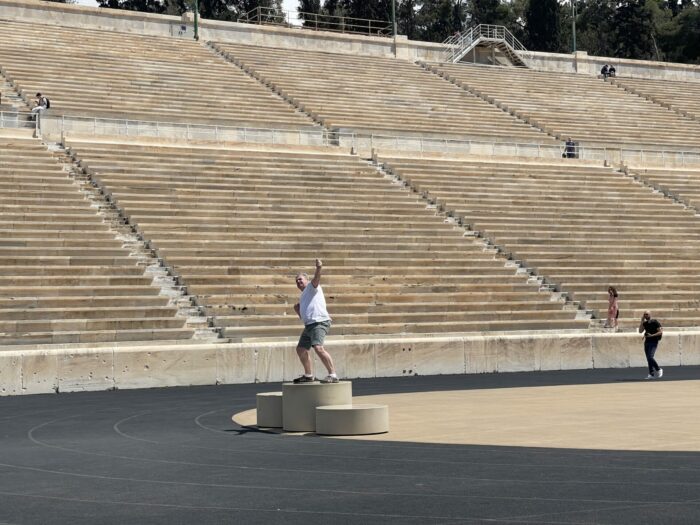
For an even more in-depth experience, check out this tour where you can learn how the athletes of ancient Athens trained while you work out in the nearby Zappeion, and even race in the stadium yourself!
My Visit to Panathenaic Stadium
As I entered the stadium, the scale of it towering above me became even more impressive.
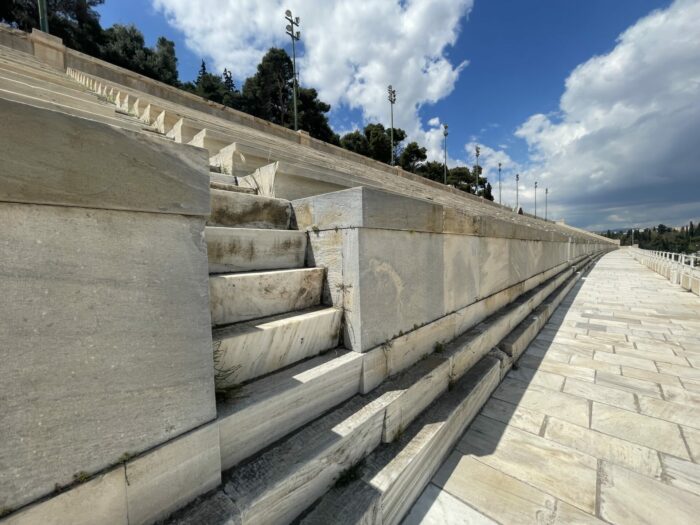
Visitors are free to explore anywhere in the stadium bowl. Before climbing upward, consider that you’ll need to get back down. Do as I did, and be sure to see whatever you want to at each level so you don’t need to keep going up and down steps.

The Marble Thrones look impressive, though they’re not all that more comfortable than the other stone seats.
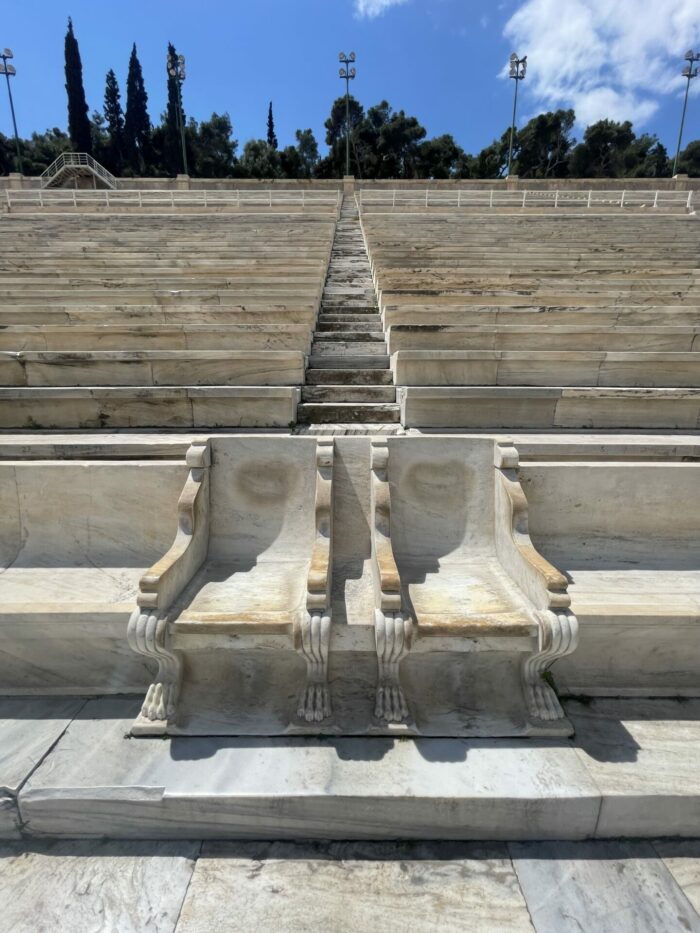
It was then time to head up to the top of the stadium.
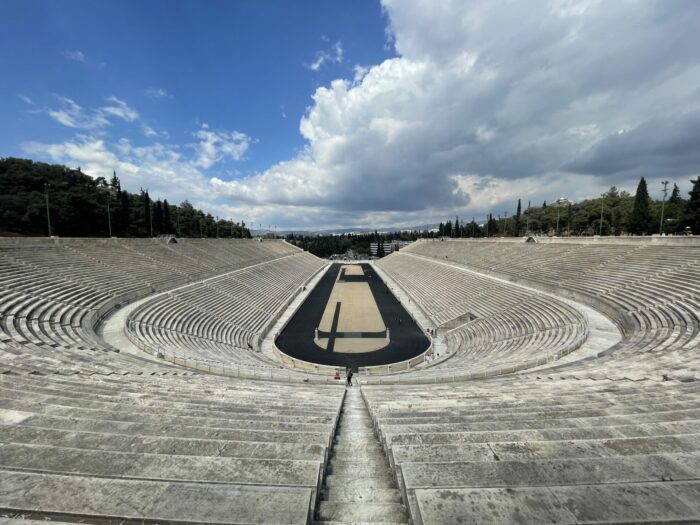
I’m a big fan of repetition in design, so I was mesmerized seeing row after row of white marble seating.
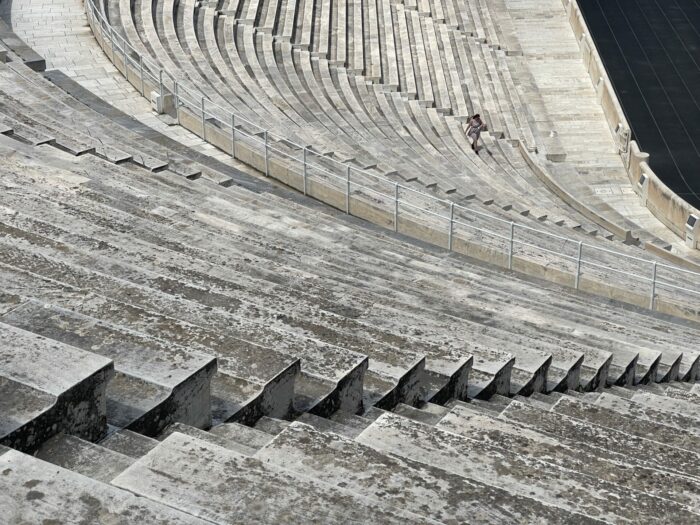
Be sure to head to the east side of the Panathenaic Stadium. It has panoramic views of the Acropolis and other Athens landmarks. Given the history of both sites, it’s remarkable to think that modern city construction aside, these views also would have been possible some 2,000 years ago.
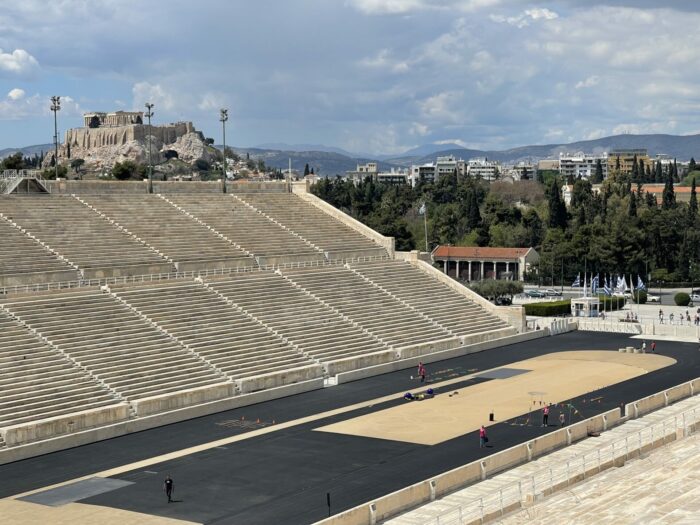
After touring the stadium, be sure to check out some of the more hidden parts underneath it.
The Tunnel of Fate is a vaulted passageway that athletes use to enter the stadium.
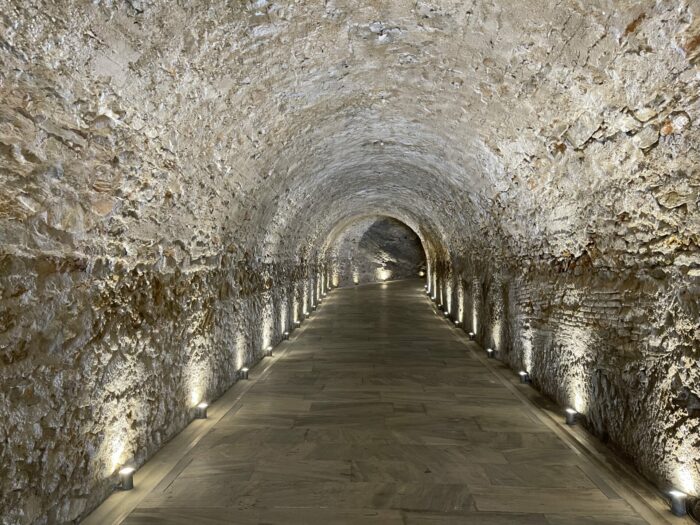
Today, it leads to a small Olympic museum that showcases the history of the Games, as well as Olympic torches and posters from throughout the years.

There’s also a shop where you can buy posters & other Olympic memorabilia.

As I headed to the Panathenaic Stadium exit via the Tunnel of Light, I thought of the athletes who have competed here over the course of thousands of years. I’m no athlete, but for a short distance, I ran toward glory. Or at least toward loukoumades.
Here are some great Athens tours & activities & other things to see & do in Athens.
If you’re looking for a place to stay in Athens, check out these hotels. I recommend the Moxy Athens City, InnAthens, and Pan Hotel Athens.

